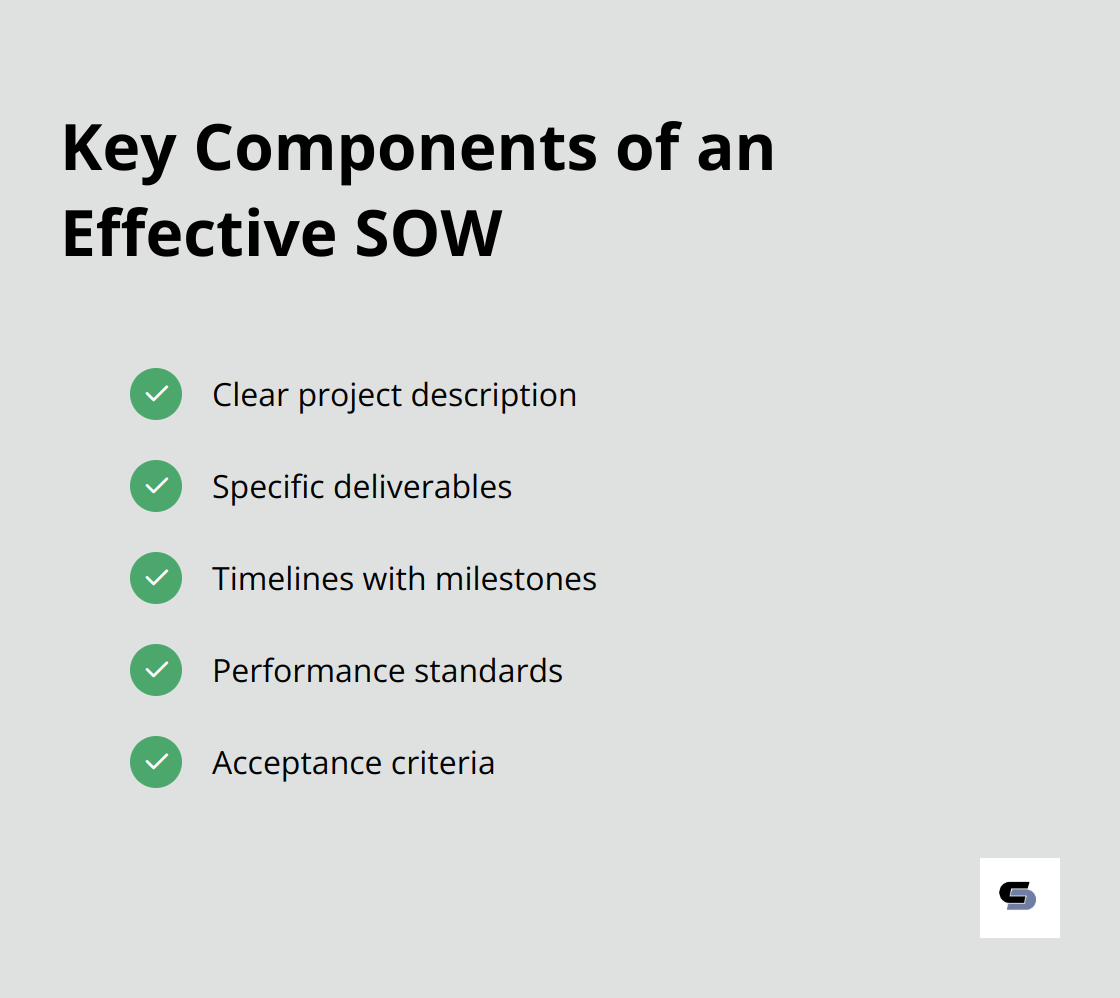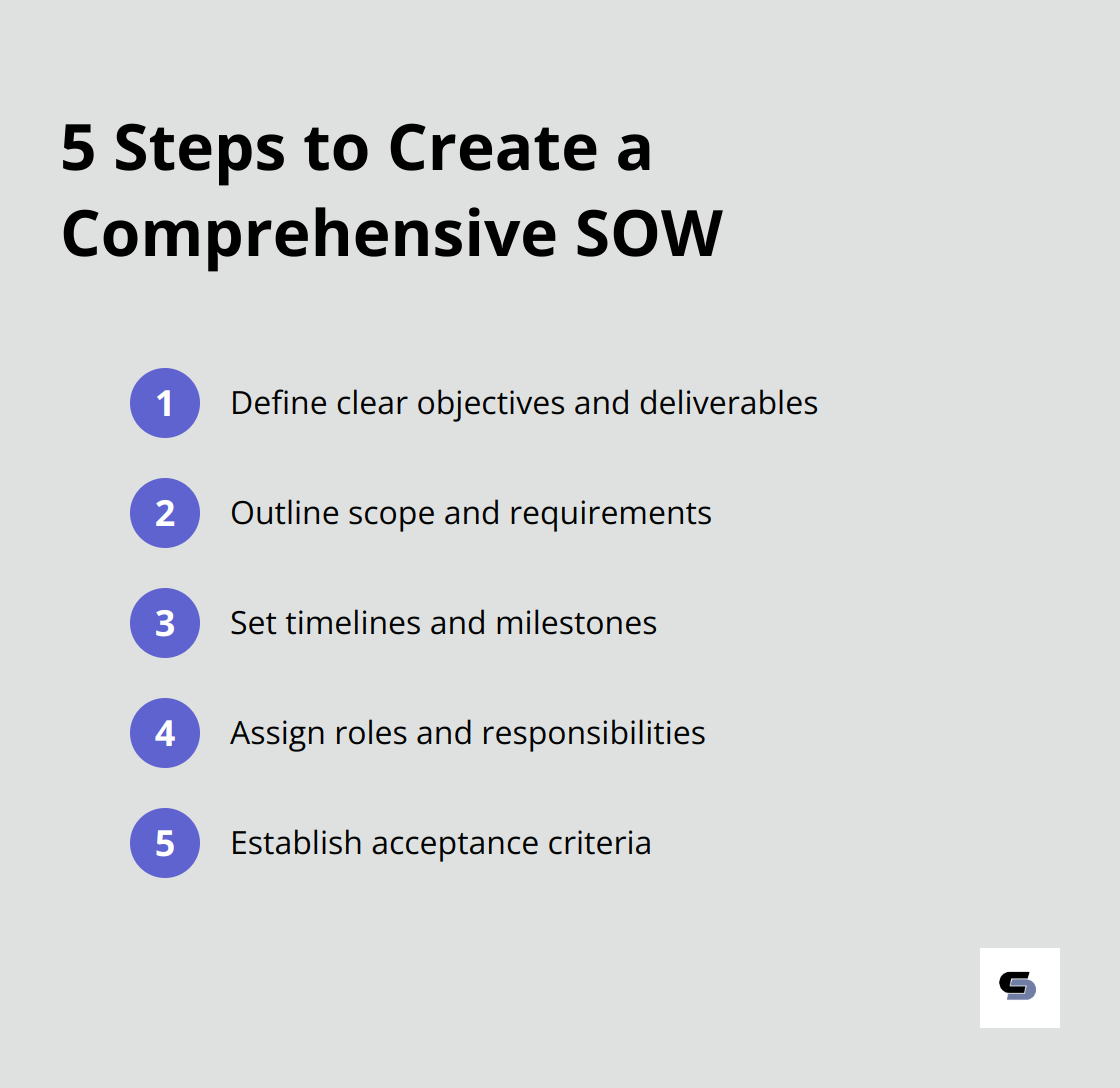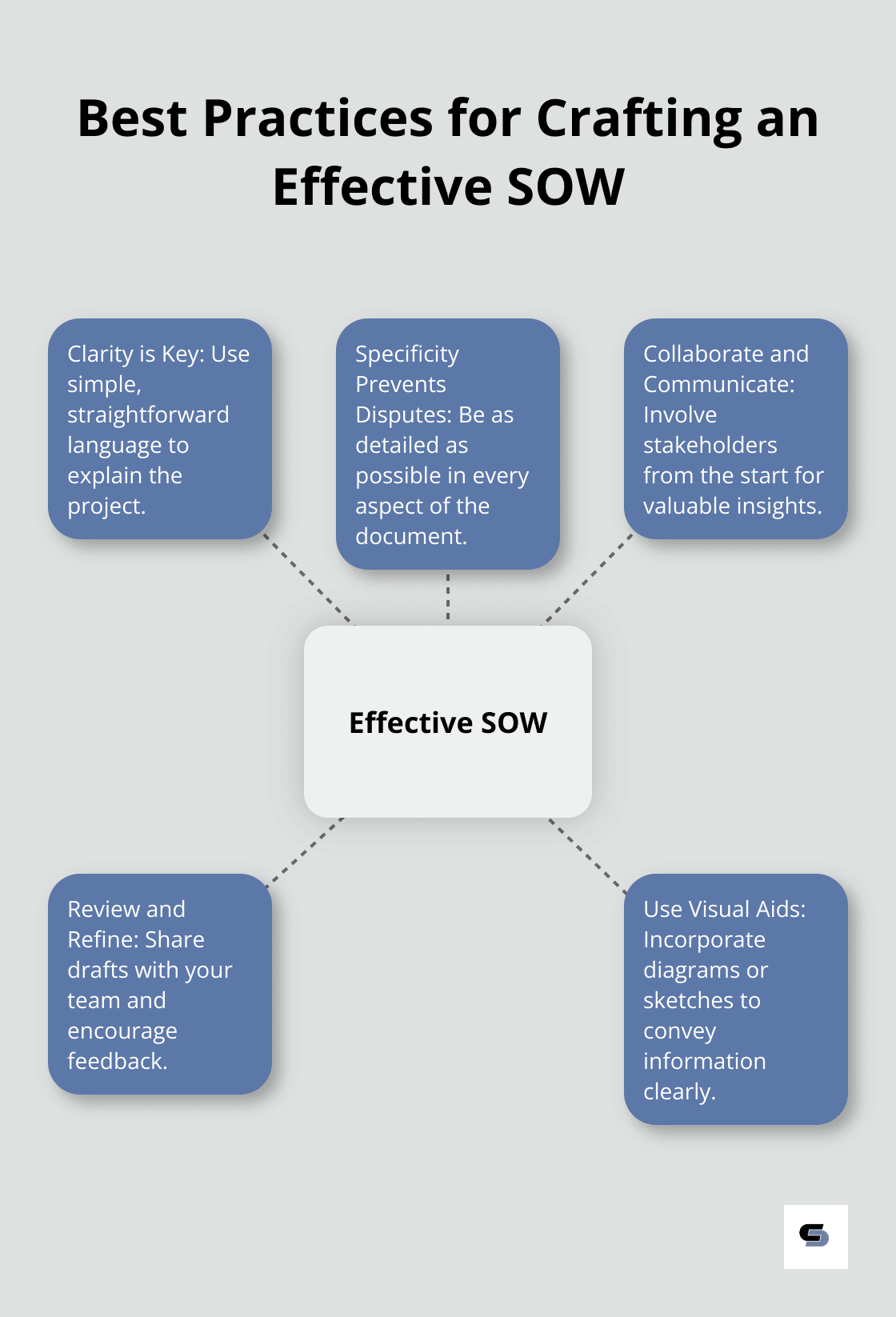How to Create a Statement of Work in Project Management
At Cameron Construction, we know that a well-crafted Statement of Work (SOW) is the foundation of successful project management. This crucial document outlines the project’s objectives, scope, and deliverables, ensuring all stakeholders are on the same page.
In this blog post, we’ll guide you through the process of creating an effective Statement of Work in project management. We’ll cover everything from understanding its key components to best practices for writing a comprehensive SOW.
What Is a Statement of Work?
Definition and Purpose
A Statement of Work (SOW) serves as a critical document in project management. It formally documents the work to be performed, sets expectations, defines responsibilities, and establishes the terms under which the project will be executed. The primary purpose of an SOW is to provide a detailed roadmap for project execution. It acts as a binding agreement between the client and the service provider. A well-crafted SOW minimises misunderstandings, reduces the risk of scope creep, and sets realistic expectations for project outcomes.
Key Components
An effective SOW includes several key components:

For example, a kitchen renovation SOW would detail the exact specifications of cabinets, benchtops, and appliances to be installed, along with a timeline for each phase of the renovation.
SOW vs. Project Charter and Scope Statement
An SOW differs from a Project Charter and a Scope Statement. A Project Charter is a high-level document that authorises the project and appoints the project manager. It doesn’t contain the detailed specifications found in an SOW. A Scope Statement (a component of the SOW) specifically defines what is and isn’t included in the project scope.
The SOW provides comprehensive details about how the project will be executed. In a multi-storey home expansion project, the SOW would include not just what will be built, but also how it will be built, the materials to be used, and the specific timelines for each construction phase.
Impact on Project Success
A well-crafted SOW can significantly impact project success. A study by the Project Management Institute contributes to the development of the field by synthesising seminal literature into a multilevel framework of project success. This underscores the importance of creating a detailed and accurate SOW before project commencement.
Industry-Specific Considerations
Different industries may require specific elements in their SOWs. For construction projects (like those undertaken by Cameron Construction), an SOW might include detailed architectural drawings, material specifications, and local building code compliance requirements. In IT projects, the SOW could detail software requirements, integration points, and user acceptance testing criteria.
As we move forward, we’ll explore the steps to create a comprehensive SOW, ensuring you have all the tools to set your projects up for success from the start.

Creating Your SOW Step by Step
Define Clear Objectives and Deliverables
Start with a clear articulation of your project’s aims. For a home renovation project, this might include increasing living space, modernising the kitchen, or improving energy efficiency. Specificity is key. “Expand the living room by 200 square feet” provides more clarity than “Make the living room bigger.”
List all deliverables – the tangible outcomes of your project. In a kitchen renovation, deliverables might include new cabinets, benchtops, appliances, and flooring. Specify quantities, dimensions, and materials where applicable.
Outline Scope and Requirements
Define what’s included in the project-and what’s not. This prevents scope creep and misunderstandings. For a bathroom renovation, specify whether the project includes updating the plumbing system or just the visible fixtures.
Detail all requirements, including materials, quality standards, and any specific regulations or building codes that must be followed. For heritage properties, note any preservation requirements that impact the project.
Set Timelines and Milestones
Create a realistic timeline for your project, breaking it down into phases with specific start and end dates. Include key milestones to track progress. For a major home extension, milestones might include completing the foundation, framing, roofing, and interior finishes.
Account for potential delays due to weather, material delivery, or permit approvals. It’s better to slightly overestimate timelines than to set unrealistic expectations.
Assign Roles and Responsibilities
Define who’s responsible for what. This includes both your team and the client’s responsibilities. Specify who will make decisions, handle specific tasks, and needs to be consulted at various stages.
In a kitchen renovation, you might specify that the client selects appliances by a certain date, while your team handles the cabinet installation and plumbing work.
Establish Acceptance Criteria
Define what constitutes successful completion of the project or each phase. This might include passing inspections, meeting specific quality standards, or achieving certain performance metrics.
Outline the approval process. Who needs to sign off on completed work? What’s the procedure if changes are needed? Having this clearly defined upfront can save a lot of headaches later.
A Statement of Work serves as your roadmap to project success. It lays the foundation for planning and successful project execution. It requires time to create, but it’s an investment that pays off in smoother project execution and happier clients.
Now that we’ve covered the essential steps in creating a comprehensive SOW, let’s explore some best practices that will elevate your SOW from good to great.
Crafting an Effective SOW

Clarity is Key
When you write your SOW, explain the project as if you’re talking to someone who’s never heard of it before. Use simple, straightforward language. Avoid jargon or technical terms unless absolutely necessary. If you must use industry-specific terms, define them clearly.
For example, instead of saying “implement a thermally efficient building envelope,” say “install insulation and energy-efficient windows to reduce heat loss.” This level of clarity ensures everyone (from the client to the subcontractors) understands exactly what’s expected.
Specificity Prevents Disputes
Vague language in an SOW can lead to misunderstandings and disputes. Be as specific as possible in every aspect of your document. Instead of saying “renovate the kitchen,” break it down into specific tasks: “Remove existing cabinetry, install new custom maple cabinets, replace laminate benchtops with granite, install new stainless steel appliances.”
Include measurements, materials, brands, and models where applicable. This level of detail leaves no room for misinterpretation and provides a clear benchmark for project completion.
Collaborate and Communicate
Creating an SOW shouldn’t be a solitary task. Collaborate with stakeholders from the start. This includes project managers, team leads, and even the client. Their input can provide valuable insights and help identify potential risks that might have a negative impact.
We’ve found that involving designers, engineers, and interior advisors in the SOW creation process leads to more comprehensive and realistic project plans. This collaborative approach ensures all aspects of the project are considered and accounted for.
Review and Refine
An SOW is a living document. As you draft it, share it with your team for review. Encourage questions and feedback. This iterative process helps refine the document and ensures it accurately reflects the project scope and requirements.
Use Visual Aids
Try to incorporate visual elements into your SOW. Diagrams, flowcharts, or even simple sketches can often convey information more clearly than text alone. For a home renovation project, include floor plans or 3D renderings (if available) to illustrate the proposed changes.
Final Thoughts
A comprehensive Statement of Work in project management provides clarity, aligns expectations, and serves as a roadmap for all stakeholders. This powerful tool facilitates communication, collaboration, and accountability throughout the project lifecycle. A detailed SOW minimises misunderstandings, reduces scope creep, and increases the likelihood of project success.
At Cameron Construction, we understand the importance of thorough planning and stakeholder involvement in every project. Our team collaborates closely with clients to create comprehensive SOWs that capture every aspect of home renovations and extensions. This attention to detail helps us deliver projects that meet our clients’ expectations.
As you start your next project, craft a detailed Statement of Work. Engage all relevant stakeholders, use specific descriptions, and employ clear language. You’ll set your project up for success from the beginning, which paves the way for efficient project execution (and ultimately, a result that transforms your space).






